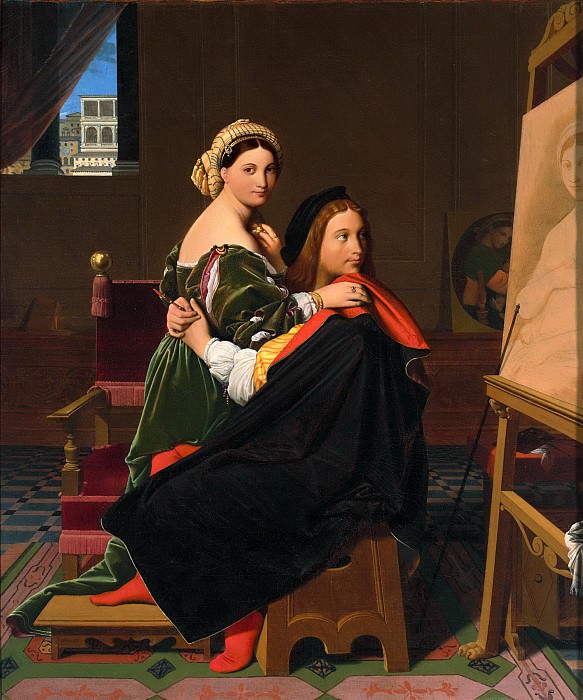Raphael and the Fornarina Jean Auguste Dominique Ingres (1780-1867)
Jean Auguste Dominique Ingres – Raphael and the Fornarina
Edit attribution
Download full size: 1996×2400 px (0,5 Mb)
Painter: Jean Auguste Dominique Ingres
Location: Fogg Art Museum, Harvard University, Cambridge.
The year of creation is 1841. Materials - canvas, oil, size - 64.77 by 53.34 cm. It is housed in the Harvard University Museum of Art, Cambridge, USA. The canvas was painted during Engr.’s life in Rome, when his style had already fully formed. The double portrait depicts Raphael Santi, another famous Renaissance painter, and his beloved Margherita Luti, nicknamed Fornarina because of her father, a baker by profession (in Italian "fornaio").
Description of the painting Raphael and Fornarina by Jean Auguste Engres
The year of creation is 1841. Materials - canvas, oil, size - 64.77 by 53.34 cm. It is housed in the Harvard University Museum of Art, Cambridge, USA.
The canvas was painted during Engr.’s life in Rome, when his style had already fully formed. The double portrait depicts Raphael Santi, another famous Renaissance painter, and his beloved Margherita Luti, nicknamed Fornarina because of her father, a baker by profession (in Italian "fornaio"). There are two versions of the couple’s relationship: it was a great and pure love; the girl was distinguished by infidelity, and only the artist was selflessly in love with her until his death.
The theme "painter-actress" was very popular in the 19th century. The female image, which can be traced in facial features, hairstyle and headdress; the characteristic face of the man was borrowed from Raphael’s Portrait of a Young Woman, or Fornarin (1518-1519) - unfinished here on an easel - and Self-Portrait (1506), respectively. Jean Auguste used a rather interesting technique, because in fact the viewer here sees Marguerite three times - "live", on the sketch and already finished painting in the background. However, it is still reliably unknown whether this lady actually existed.
The lovers are in a richly decorated artist’s studio, the mosaic floor, the patterned carpet, probably marble walls, a velvet chair, behind a large window with columns a piece of an Italian city are depicted in detail. There is also a special focus on clothing - the folds of a dark green softly glowing dress and a black and red cloak. The genius with the brush in his hand as if comparing the drawing with the original in his arms, and she only smiles indulgently, aware of her power over him.
It is worth noting the beautifully balanced diagonally by light and dark spots composition, realism and original approach of the creator to an almost legendary story.
Кому понравилось
Пожалуйста, подождите
На эту операцию может потребоваться несколько секунд.
Информация появится в новом окне,
если открытие новых окон не запрещено в настройках вашего браузера.
You need to login
Для работы с коллекциями – пожалуйста, войдите в аккаунт (open in new window).




















COMMENTS: 2 Ответы
эта картина разыскивается до сих пор?
https://www.youtube.com/watch? v=_OPLPzP-uJI
Это картина похищенная в 1944 году из Рижского музея?
You cannot comment Why?